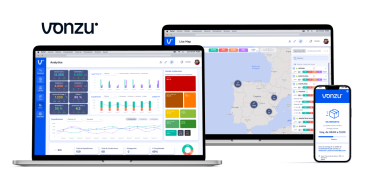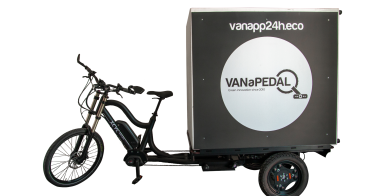Urban delivery solutions: New road vehicles to focus on
One of the latest challenges facing new urban delivery vehicles is the need to balance the demand for faster and more efficient deliveries with the need to reduce emissions and improve air quality in cities. Many cities around the world are implementing low-emission zones, congestion charges, and other measures to encourage the use of cleaner vehicles. This has led to an increasing demand for electric, hybrid, and other low-emission delivery vehicles.
Acquiring low-/zero- or beyond-zero emission vehicles is not the only challenge on the agenda. Another challenge is the need to navigate crowded and congested urban environments safely and efficiently. Urban delivery vehicles must be able to maneuver through narrow streets and navigate traffic while respecting pedestrian zones, other road users and other obstacles. As a result, there is a growing trend towards the use of autonomous and semi-autonomous delivery vehicles that can operate safely and efficiently in these environments.
Other trends in new urban delivery vehicles include the use of lightweight materials and modular designs to improve fuel efficiency and reduce emissions. There is also a growing trend towards the use of drone and other unmanned delivery vehicles for last-mile deliveries in urban areas, as well as the use of shared delivery vehicles to reduce congestion and improve efficiency. Finally, there is a growing interest in the use of data analytics and other advanced technologies to optimise delivery routes, reduce delivery times, and improve overall efficiency.
As new vehicles & technologies are about to enter the market, cities and other key stakeholders in the sustainable logistics need to be aware about the challenges, opportunities and requirements to deploy new use cases or to implement efficient regulation. A targeted market analysis developed by PNO Innovation Spain, has concluded in a database of over 245 market-ready vehicle innovations.
The analysis includes seven types:
- Sidewalk autonomous delivery robots: Pedestrian sized robots that only utilise sidewalks or pedestrian paths.
- Road autonomous delivery robots: Autonomous vehicles that travel on roadways shared with conventional motorised vehicles.
- Electric cargo bikes: Electric and innovative cargo bikes made for urban delivery activities.
- E-mopeds and e-motorcycles: 2- and 3-wheels electric mopeds and motorcycles for delivering freights in urban areas.
- Quadricycles and cargo e-cars: Lightweight electric quadricycles and car-type vehicles for delivery activities in urban areas.
- Electric urban delivery mini-vans: Electric mini-vans (up-to 1 GWT or 750 kg of payload) as urban delivery vehicles.
- Electric urban delivery vans: Electric vans (up to 7 GWT) as urban delivery vehicles.
The market analysis will be presented in a webinar on 24 May as part of the ENTRANCE project.
Don't miss the chance to learn more about all available solutions and register to the session on 24 May, 09:00-11:00 (CEST).
Updated on 04 May 2023.






